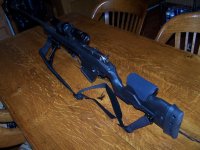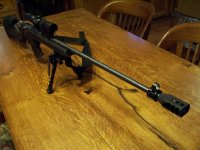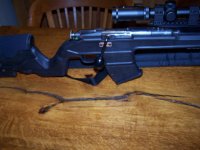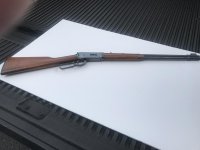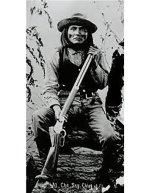The Romantic scenario........
I'm a scout, a guide and I escort parties of hunters through dangerous terrain inhabited by dangerous animals. I need a light gun because I must always have it at the ready, hanging in my Ching sling in case we are attacked by a herd of mountain lions or wild pigs, or wolves, or bears. I need to be able to empty my magazine and reload quickly with rounds in stripper clips. The men in my party depend on me for their safety. In my rugged backwoods hunting gear and hat three sizes to big, I ride on my trail mule, "Ole Blood and Guts". If I see an animal 500 yards away, getting ready to attack, I need to fell it with one shot, therefore my cartridge of choice is a .308, good for anything in North America with a heart or head shot and my long eye relief 6x scope makes such a shot easy. If a predator breaks out of the brush in a charge, I switch to my ghost ring sights and rapid fire until the threat is stopped.
Am I on the right track? I have a feeling that this makes for better writing or beer hall stories than it does in reality.
I'm a scout, a guide and I escort parties of hunters through dangerous terrain inhabited by dangerous animals. I need a light gun because I must always have it at the ready, hanging in my Ching sling in case we are attacked by a herd of mountain lions or wild pigs, or wolves, or bears. I need to be able to empty my magazine and reload quickly with rounds in stripper clips. The men in my party depend on me for their safety. In my rugged backwoods hunting gear and hat three sizes to big, I ride on my trail mule, "Ole Blood and Guts". If I see an animal 500 yards away, getting ready to attack, I need to fell it with one shot, therefore my cartridge of choice is a .308, good for anything in North America with a heart or head shot and my long eye relief 6x scope makes such a shot easy. If a predator breaks out of the brush in a charge, I switch to my ghost ring sights and rapid fire until the threat is stopped.
Am I on the right track? I have a feeling that this makes for better writing or beer hall stories than it does in reality.
Last edited:

